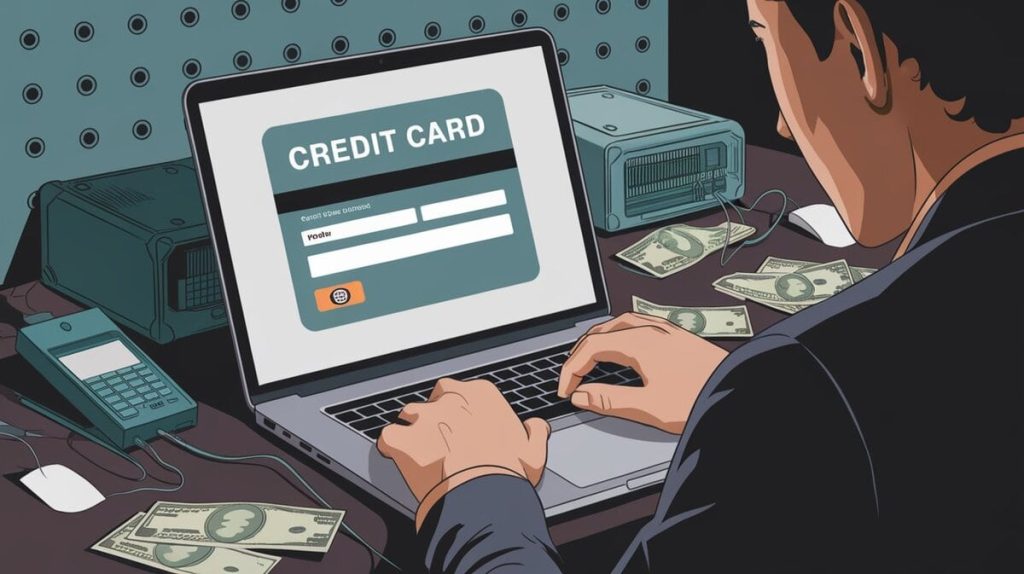Introduction to Chargeback Scams
Credit card chargebacks are designed to protect consumers, allowing them to dispute transactions they believe to be fraudulent or incorrect. However, this system has become a target for fraud, with chargeback scams costing businesses billions each year. Chargeback scams include both friendly fraud and chargeback fraud.
In 2021, global card fraud losses, including chargebacks, reached $32 billion. Chargebacks are a significant part of this loss, particularly impacting online businesses. Understanding these scams and implementing prevention measures is essential for merchants to maintain profitability and customer trust.
Types of Chargeback Scams
Friendly Fraud
Friendly fraud occurs when a consumer disputes a legitimate transaction. This might happen due to forgetfulness, misunderstanding, or intentional deception. For example, a customer might claim a family member used their card without permission, or they might regret a purchase and seek a refund through a chargeback.
Key Statistics on Friendly Fraud:
- Friendly fraud accounts for 70% to 80% of all chargeback disputes (Visa’s Merchant Risk Council).
- U.S. merchants lost $25 billion to friendly fraud in 2023, a figure expected to rise with increasing online transactions.
Chargeback Fraud
Chargeback fraud, also known as first-party fraud, involves a consumer intentionally disputing a legitimate charge to receive a refund while keeping the goods or services. This type of fraud is difficult for merchants to combat due to the lack of immediate evidence.
Impact of Chargeback Fraud:
- Chargeback fraud costs merchants billions annually, with estimates placing the global cost at $40 billion by 2023.
- High chargeback ratios can lead to increased processing fees and the potential loss of payment processing privileges.
AI and Fake IDs
The rise of AI-generated fake identities is a growing threat in chargeback fraud. Criminals use advanced tools to create synthetic identities, making fraudulent chargebacks more successful. According to Mastercard, AI-driven fraud schemes have increased by 45% over the past two years.

Impact on Merchants
Chargeback scams have a significant impact on merchants, affecting revenue, operational efficiency, and industry reputation. The direct costs of chargeback fraud include lost revenue, chargeback fees, and merchandise losses. Indirect costs—such as higher transaction fees, reputational damage, and the time spent managing disputes—are equally damaging.
Table 1: Financial Impact of Chargeback Fraud on Merchants
| Impact Type | Average Cost per Chargeback | Additional Considerations |
|---|---|---|
| Chargeback Fees | $20 – $100 | Fees vary based on industry risk levels (Source: Visa, 2024) |
| Lost Merchandise | Transaction Value | Merchandise is rarely returned after a successful chargeback (Source: Checkout.com, 2024) |
| Higher Processing Fees | 5% – 20% increase | High-risk merchants face steeper fees (Source: Stripe, 2024) |
| Operational Costs | $25 – $40 | Cost of managing disputes, gathering evidence, and responding (Source: Braintree, 2024) |
Beyond financial losses, merchants also face reputational risks. High chargeback ratios can lead to classification as a high-risk business, resulting in stricter monitoring by payment processors or even account termination.

Prevention Strategies
To combat chargeback scams, merchants must adopt strategies that include fraud detection tools, customer education, and robust documentation.
Fraud Detection Tools
Advanced tools using AI and machine learning can detect suspicious transactions before they result in chargebacks. These tools analyze patterns in purchase behavior, identify discrepancies, and flag potentially fraudulent transactions. For example, implementing two-factor authentication and device fingerprinting can reduce unauthorized transactions.
Merchants can also partner with service providers like Merchanto.org, an official Visa and MasterCard partner in chargeback prevention, to integrate advanced fraud detection technologies and streamline dispute management processes. More information on these solutions is available at Merchanto.org.
Customer Education
Educating customers about the chargeback process can reduce friendly fraud. Clear and concise information about the consequences of filing illegitimate disputes helps prevent misunderstandings. This includes:
- Detailed receipts: Ensure receipts clearly outline the transaction terms.
- Transparent policies: Make return and refund policies easily accessible.
- Proactive communication: Contact customers immediately when a chargeback is initiated to resolve the issue before escalation.
Documentation and Record-Keeping
Maintaining detailed records of transactions, including communication logs, shipping confirmations, and customer agreements, is essential for contesting chargebacks. Merchants should:
- Keep transaction records: Including invoices, receipts, and customer communications.
- Monitor recurring transactions: Pay attention to subscription-based services, which are vulnerable to chargebacks.
- Audit chargeback data: Regularly review data to identify patterns and adjust fraud prevention strategies.
Table 2: Best Practices for Preventing Chargebacks
| Strategy | Description | Example Tools/Methods |
|---|---|---|
| Advanced Fraud Detection | Use AI to detect and prevent fraudulent transactions | Device fingerprinting, two-factor authentication |
| Customer Education | Inform customers about the chargeback process and its implications | Clear terms of service, detailed receipts |
| Comprehensive Documentation | Keep thorough records of all transactions and customer interactions | Invoices, signed contracts, email communications |
| Proactive Dispute Management | Engage with customers early in the dispute process to resolve issues before escalation | CRM systems, automated customer communication tools |
Legal and Ethical Considerations
Chargeback fraud occupies a legal gray area. While merchants have the right to dispute fraudulent chargebacks, pursuing legal action is often impractical due to the costs involved. According to Visa’s Chargeback Guide, merchants can dispute chargebacks they believe are fraudulent, but the burden of proof lies with the merchant.
Merchants must also consider ethical issues, balancing the need to protect their business with the rights of consumers. Wrongly disputing legitimate chargebacks can damage a business’s reputation and lead to further complications.
Conclusion
Chargeback scams are a substantial threat to merchants, particularly in the digital economy. Understanding the types of chargeback fraud, such as friendly fraud and intentional chargeback fraud, is crucial for protecting a business’s revenue and reputation. Implementing robust prevention strategies, including advanced fraud detection, customer education, and thorough documentation practices, is essential.
By staying proactive and informed, merchants can reduce the impact of these scams and maintain their operational integrity. Effective chargeback management is not just about reacting to disputes but also about preventing them from occurring in the first place through strategic planning and the use of appropriate tools and technologies.



